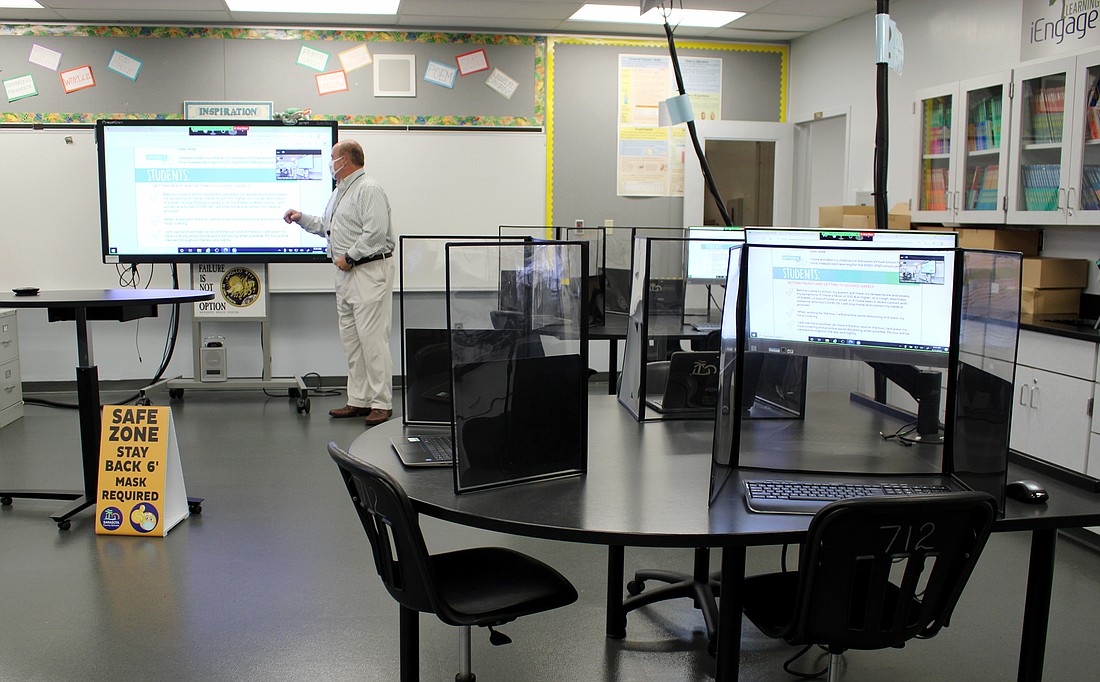- October 23, 2024
-
-
Loading

Loading

Despite early tests showing just a small hint of a “COVID-19 slide,” more recent testing data shows that more Sarasota students are struggling than in previous years.
The district uses i-Ready Diagnostic scale scores for elementary and middle school students to determine student progress both individually and as a group.
When tested in September, elementary and middle school students’ scores remained consistent to the previous three years in English and trended downward in math. After a second round of tests in December, a downward trend is evident in all areas.
Students this year received eight or nine weeks of instruction between diagnostic tests compared to 12-14 weeks in between last year. Superintendent Brennan Asplen said that additional instruction time could have contributed to better testing scores.
According to data presented to the school board, 50% of elementary students are at least one grade level behind in math compared to 40% last year, while 39% of students are at least one grade level behind in elementary reading compared to 32% last year.
Elementary Curriculum Director Kelly Ellington said she and her team are sifting through the data to analyze it at each grade level and create action steps designed to reverse the trend.
At the middle school level, 57% of students are at least one grade level behind in math compared to 51% last year, and 44% of students are at least one grade level behind in reading compared to 40% last year.
The data for math excludes about 2,430 algebra and geometry students, who are the highest-achieving math students, Middle School Curriculum Director Sue Meckler said.
Meckler said many students who are more than one grade level behind are showing improvements but are still behind at least one grade level, which would still show a decrease in the data.
She said middle school instructors are focused on how to improve their instruction and create better goals for struggling students.
“Teachers know how to adjust the instructional pathways of those students to make sure that they are passing their lessons within the personalized instruction,” Meckler said. “We are goal-setting with the students, so they take ownership of their data.”
High school students use different tests than younger students to benchmark data. Those results have not yet been presented to the board. However, High School Curriculum Director Catherine Cocozza said high school students are performing better than expected in reading.
Asplen said contributing factors to the decrease include teachers navigating concurrent learning, more students opting for virtual learning and a lack of full-time teachers. However, he said the district is still doing well.
“We always want to be better than we are,” Asplen said. “We always want to improve. We always want to move forward, but I have to say, I really think our teachers have done an amazing job this first semester.”
Last year, COVID-19 and at-home learning led state officials to cancel state testing. However, Florida Education Commissioner Richard Corcoran issued an emergency order Monday that states testing will go on this year, but in an expanded timeframe from early April to mid-June.